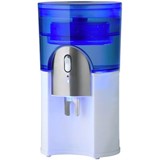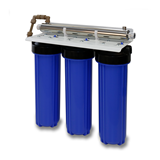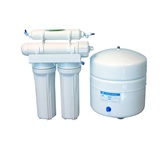Australians were anticipated to spend $24.4 million on seafood over Easter this year or 3.4 per cent more than 2013, while consumption is projected to increase by 20 per cent on the previous year.This will provide the fishing industry a brief reprieve from the difficult trading conditions it has faced over the past five years due to stricter catchment regulations and dwindling fish stocks.
According to IBISWorld Australia General Manager Karen Dobie, "increasing non-denominational and multi-faith participation in Good Friday celebrations is driving growth in seafood consumption over Easter".
Health consciousness and consumption
Increased consumption over Easter mirrors higher seafood consumption overall. Seafood consumption is expected to reach 19.4 kilograms per capita in 2013-14, up from 17.6 kilograms in 2008-9. This represents an average annual increase of 360 grams per capita over the past five years.
Health consciousness, waning demand for red meat and poultry, and more seafood options have been the key drivers of demand, Dobie said.
"Australians are increasingly turning to fish, which are one of the best sources of omega-3 and low-fat protein, as an alternative to beef, lamb and chicken. Over the past decade, Australian tastes and diets have shifted from the traditional meat and three vegetables to incorporate greater variations and experimentation," Dobie said.
"Salmonoids, which include Atlantic salmon and trout, are currently the most popular fish type consumed by Australians. However, the popularity of basa is increasing, largely due to the fish's neutral flavour, low pricepoint and boneless fillets. Basa now accounts for one-third of frozen fish imports."
Ethical eating
"In the past decade, the fishing industry has come under increased scrutiny in relation to ethical and sustainable farming and fishing practices – driving change across the industry," said Dobie.
While aquaculture is fast becoming a mainstay in managing fish sustainability, accounting for almost half of total fishery value in Australia, wild catch fishing still accounts for 60 per cent of fishery production.
"At a legislative level, wild catch fishing is being constrained by catchment restrictions that aim to improve the sustainability of Australian fish and to protect underwater ecosystems."
Cheap imports and domestic prices
Despite higher fish and seafood consumption, cheap imports are constraining revenue growth in the fish and seafood wholesaling industry, which IBISWorld forecasts will grow at 1.1 per cent per annum over the next five years.
Falling supplies of fish and seafood have pushed prices of domestic fish and seafood up over the past five years. Prices for domestic seafood in 2013-14 are almost 10.0 per cent higher than five years ago.
Dwindling fish stocks will continue to drive prices upwards over the next five years, at a forecast 2.7 per cent per annum. As wild fish catchment restrictions continue to be tightened, enterprises are exiting the fishing industry.
Imports outweigh exports
Despite Australia's significant fishable coastline, with more than 55.0 per cent of it within the fishing states of Western Australia and Queensland, Australia remains a net importer of seafood.
|
Seafood imports |
||||
|
Fresh fish |
|
|
Frozen fish |
|
|
Tuna |
0.14% |
Hake |
|
2.95% |
|
Salmonoids |
0.55% |
Salmonoids |
|
0.60% |
|
Swordfish |
0.15% |
Tuna |
|
0.12% |
|
Shark |
0.43% |
Toothfish |
|
0.19% |
|
Other |
9.04% |
Other |
|
32.56% |
|
Fresh Crustaceans & Molluscs |
Frozen Crustaceans & Molluscs |
|||
|
Prawns |
0.14% |
Prawns |
|
28.62% |
|
Mussels |
0.04% |
Squid and octopus |
10.92% |
|
|
Squid and octopus |
0.05% |
Scallops |
|
6.06% |
|
Other |
1.00% |
Other |
|
6.44% |
Exports hover around 20 per cent of imported volumes, and IBISWorld estimates that less than half of seafood consumed in Australia is caught in Australian waters.
Australia's key seafood export markets are Hong Kong (at 45.4 per cent) and Japan (23.6 per cent), with primary export products including rock lobster, tuna and abalone. While Australia's seafood exports currently account for 41.9 per cent of the combined revenue of the fishing and aquaculture industries, IBISWorld expects the continuing high prices of domestically produced seafood will stymie export growth outside of these premium product categories.
|
Top fish and seafood export destinations |
|
|
Hong Kong |
45.4% |
|
Japan |
23.6% |
|
Vietnam |
4.9% |
|
China |
4.8% |
|
Singapore |
3.5% |
|
United States |
3.6% |
The recent free trade deals struck with Japan and South Korea are unlikely to immediately boost seafood imports and exports. However, trade is expected to slowly increase over the medium term because of these changes to the statute book.









